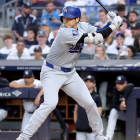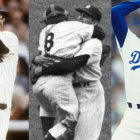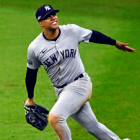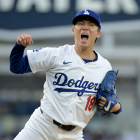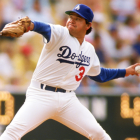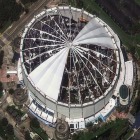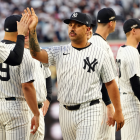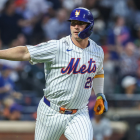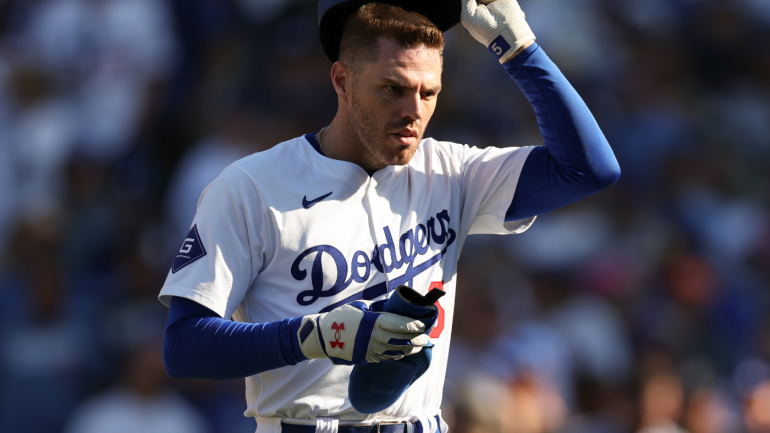
The 2024 World Series will pit the New York Yankees against the Los Angeles Dodgers and will begin on Friday, Oct. 25. The Dodgers, who defeated the San Diego Padres and New York Mets to reach this point, will possess home-field advantage by virtue of having the superior regular-season record. The Yankees, meanwhile, will host their first World Series games (Games 3 through 5) since 2009. They dispatched the Kansas City Royals and Cleveland Guardians earlier in the postseason.
As is the case every October, we here at CBS Sports wanted to preview the World Series by bringing up a few "X-factors" that could determine which team prevails. What is an X-factor? Well, in the spirit of the creative license, it's anything we deem it to be. Think of this as a thinly veiled excuse to write about a few things that we wanted to touch on but didn't necessarily think demanded their own piece. Fair enough? Fair enough.
With that established, here are four X-factors that could determine the World Series.
1. Freeman's ankle
By now, you've undoubtedly heard that Dodgers first baseman Freddie Freeman suffered a sprained ankle late in the regular season. He's since attempted to play through it, though his results indicate that he's physically compromised.
Through the Dodgers' first two playoff series, Freeman has batted .219/.242/.219 with zero extra-base hits and five more strikeouts than walks. His ball-tracking data is more encouraging, posting a higher average exit velocity than during the regular season. Nevertheless, the Dodgers have wisely sat him for three games to date, including NLCS Games 4 and 6, to help him get in a better state.
"But I do think that his swing is not right," manager Dave Roberts told reporters before Game 6, which Freeman missed. "I'm certain it's the ankle."
We'll see if the Dodgers use the same strategy during the World Series -- if so, the most logical option is to rest him whenever they're opposed by lefty starter Carlos Rodón.
Freeman's ankle was diagnosed as being a four- to six-week injury. It's unclear if the healing has been hampered by him continuing to play on it, but we'll note that he'll technically pass the month mark on Oct. 26, or the day of Game 2. The Dodgers can only hope that Freeman's ankle starts to feel better -- and that it shows in his results.
2. Buehler's Jekyll and Hyde act
The Dodgers haven't yet announced their rotation plans. It seems reasonable to think that they'll proceed with the arrangement that got them here: Yoshinobu Yamamoto, Jack Flaherty, Walker Buehler, and designated bullpen games. Of those four options, Buehler feels like the most volatile of the bunch. In what appears to be a close series on paper, his performance could theoretically end up swinging the outcome.
Buehler is only a few years removed from two All-Star Game appearances and a pair of top-10 National League Cy Young Award finishes. Unfortunately, he scuffled this year in his return from his second Tommy John surgery. In 16 regular season starts, he amassed a 5.38 ERA (72 ERA+) and a 2.29 strikeout-to-walk ratio. The Dodgers, with their options thinned by myriad injuries, have had to start him twice this month. He was scorched against the Padres, surrendering six runs in five innings, but better against the Mets, throwing four shutout innings and striking out six of 18 batters.
Which Buehler will show up in the World Series?
The larger sample tends to win out. Yet, if you're a Dodgers fan, you might be heartened to learn that Buehler's stuff did look different against the Mets. His fastball and cutter had more rise to them while his sweeper had more horizontal break than he showed throughout the year.
That doesn't mean Buehler will necessarily retain those gains against the Yankees. But it does cast some doubt on the predictive nature of what he did during the season.
3. Battle of the breaker
The Yankees and Dodgers were two of the progenitors of the sweeper revolution. It's no surprise, then, that this series could hinge on performance against breaking balls -- specifically when it comes to how the Yankees' bats fare against the Dodgers' arms.
During the regular season, the Dodgers threw the fifth-highest frequency of breaking balls (that's sliders, curves, and sweepers) of any MLB team. The Yankees, conversely, posted the ninth-highest OPS against those pitch types.
Notably, this postseason has offered good news to both clubs on this front. The Dodgers have already slayed the team that performed best against breaking balls during the season, the Padres; the Yankees, on the other hand, toppled the Royals, one of the few teams more likely than the Dodgers this year to throw a breaking ball.
Keep all this in mind during appearances by Flaherty, Ben Casparius, Ryan Brasier, and Daniel Hudson -- each threw more than 40% breaking balls this season while in Dodgers uniforms. On the Yankees side of things, Aaron Judge was the only member of the lineup with an OPS over .800 against breakers (though fellow sluggers Giancarlo Stanton and Juan Soto were both well above the team average). On the other side of the spectrum, New York's double-play combination of Anthony Volpe and Gleyber Torres each had an OPS below .600 when they were opposed by breaking balls.
4. The exposure effect
Another factor that will determine how the Yankees hit this series is their ability to adjust to seeing the same Dodgers relievers multiple times in short order. You can call it the exposure effect or the reliever familiarity dynamic or whatever you please. The idea is easy enough to understand: the more often a hitter sees a pitcher, the better they fare.
As teams have become more cognizant about avoiding that effect (the so-called times-through-the-order penalty) with starting pitchers, resulting in earlier hooks no matter the game's context, they've inadvertently opened up the same issue for their relievers. One researcher told The Ringer's Ben Lindbergh last year that "this effect, on the average, is as big or bigger than the times-through-the-order effect."
The Dodgers, who have used a bullpen game in each of their previous postseason series, seem particularly ill-equipped to minimize that effect over the course of a long series versus a great lineup. In turn, it's possible that the Dodgers' apparent advantage in the bullpen proves to be overstated or perhaps completely nullified late in the series.
Again, all we can do is wait and see how things play out on the field. But, in a series between two very good teams, every little advantage can add up.









